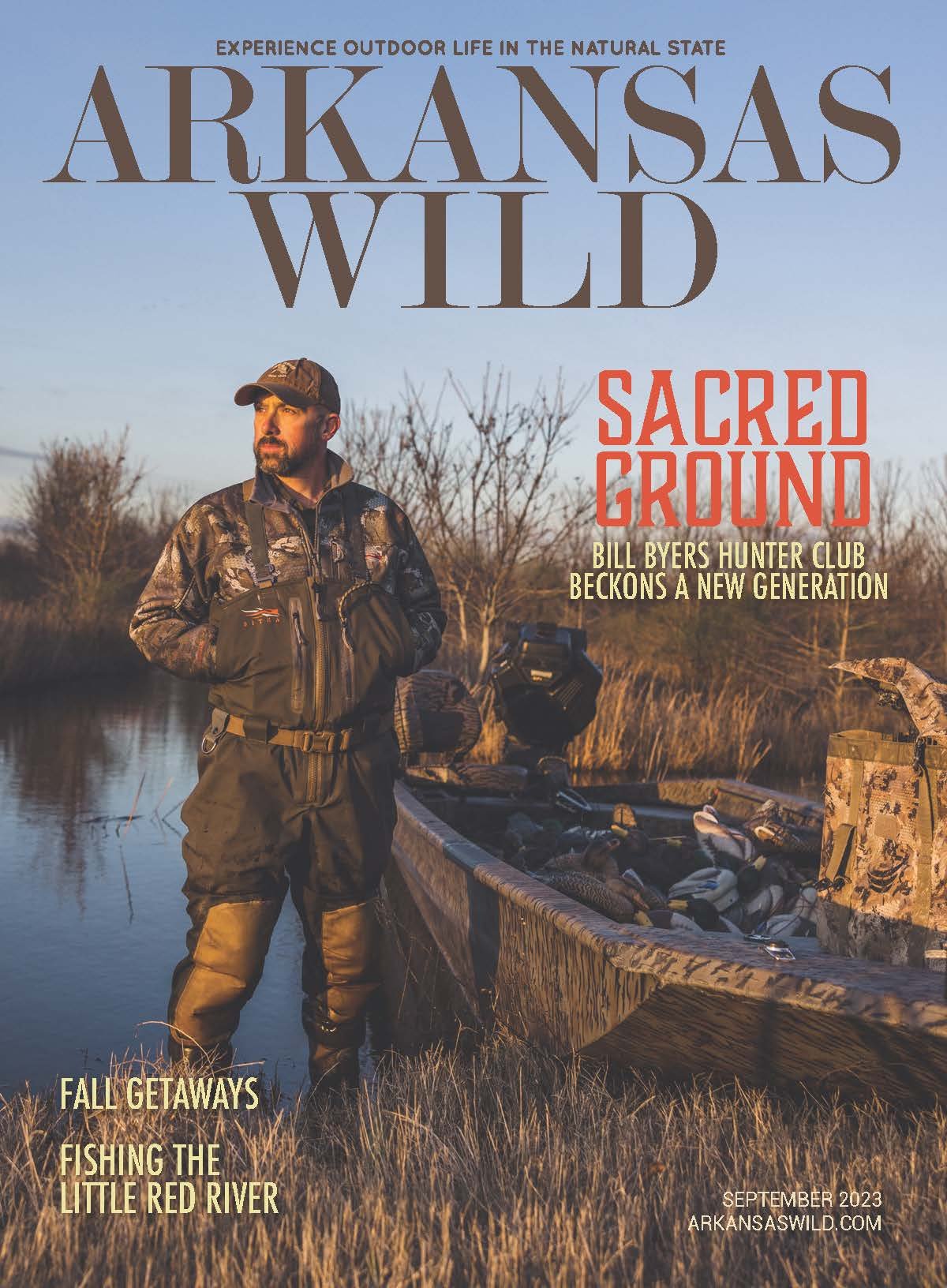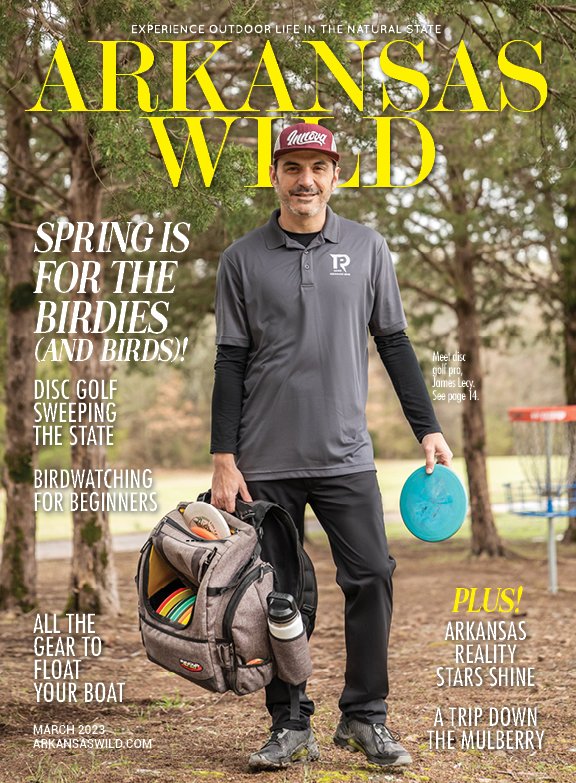TIPS FROM A PRO
Buffalo River - Gabe Levin
Levin shows off a beauty from a recent day on the water.
LOCATION:
When fishing clear water like the Buffalo River, visual data is all around you. Wear polarized sunglasses to help you see in the water. If you’re catching fish, notice the characteristics of the water you’re fishing. What does the bottom structure look like? How much depth and current is there?
If you aren’t catching fish, look for them as you paddle around. If you can visually locate them, then you can start to determine why you aren’t catching them. Are they positioned deeper or shallower than you expected? Are they exhibiting a specific feeding behavior, busting minnows against the surface, protecting a spawning ground or cruising the shoreline? The more you can see, the more pieces to the puzzle you have.
Fishing from a boat will increase your river access dramatically over wade fishing, but only to the extent you can control the watercraft’s position. To get your lure/fly to the river bottom in likely spots, you’ll need to slow your drift speed considerably. The ideal way to fish moving water is with a partner, where one angler focuses on boat positioning while the other focuses on accurate and effective casting. If you must fish alone, move out of the strong current into slower areas and point the boat upstream to help keep yourself in place.
SPOTTING:
Catching the Buffalo River’s scrappy smallmouth bass is mostly a matter of timing. Being a popular tourist destination, the river is best fished on weekdays because the weekend and holiday crowds send most of the better fish hiding under the rocks.
The Buffalo River’s water volume is always changing. Fortunately, you can gauge height at waterdata.usgs.gov. The ideal range for fishing is 4-6 feet on the St. Joe gauge. In this range, the water is greenish clear and moving at a moderate pace. Below 4 feet, the river can still fish well, although the bass will be extra wary and floating becomes more strenuous due to shallow rocky shoals and long stretches of little current. Above 6 feet, the water starts to lose clarity and moves so quickly it becomes difficult to get your lure or fly in front of a fish.
FLIES/LURES:
When water temperature is below 60 degrees, bass will be mostly in deep pools near large boulders and ledges. Choose heavily weighted lures/flies that imitate natural bass prey like minnows and crayfish. Let the lure sink to the bottom before retrieving very slowly. Bass will be a little slow to respond in cold water.
As water temperature rises into the 60s and 70s, bass feed in shallower water that has both structure and current. Fish the transitions from fast to slow water and from shallow to deep. Try Hada’s Craft Fur Clouser Minnow and Hada’s Creek Crawler for flies and small plastic tube baits or other plastic crayfish imitations on conventional tackle. Observe the minnows and crayfish in the river and try to make your lure/fly look and act like the real thing.
ENJOY THE RIDE:
Stop for a moment and look around you. The Buffalo was the very first river to obtain National Park status and for good reason. It’s visually stunning and loaded with aquatic and terrestrial wildlife. It has over 60 species of fish, a statistic of biodiversity nearly unparalleled among rivers. Don’t get so absorbed in catching them that you fail to notice the paradise surrounding you.
Gabe Levin grew up on Little Mulberry Creek with a fly rod in his hands. A guide with Dally’s Ozark Fly Fisher in Cotter, he’s an expert on the Buffalo River, the White and Norfork tailwaters and Crooked Creek, where he calls home.



